Introduction
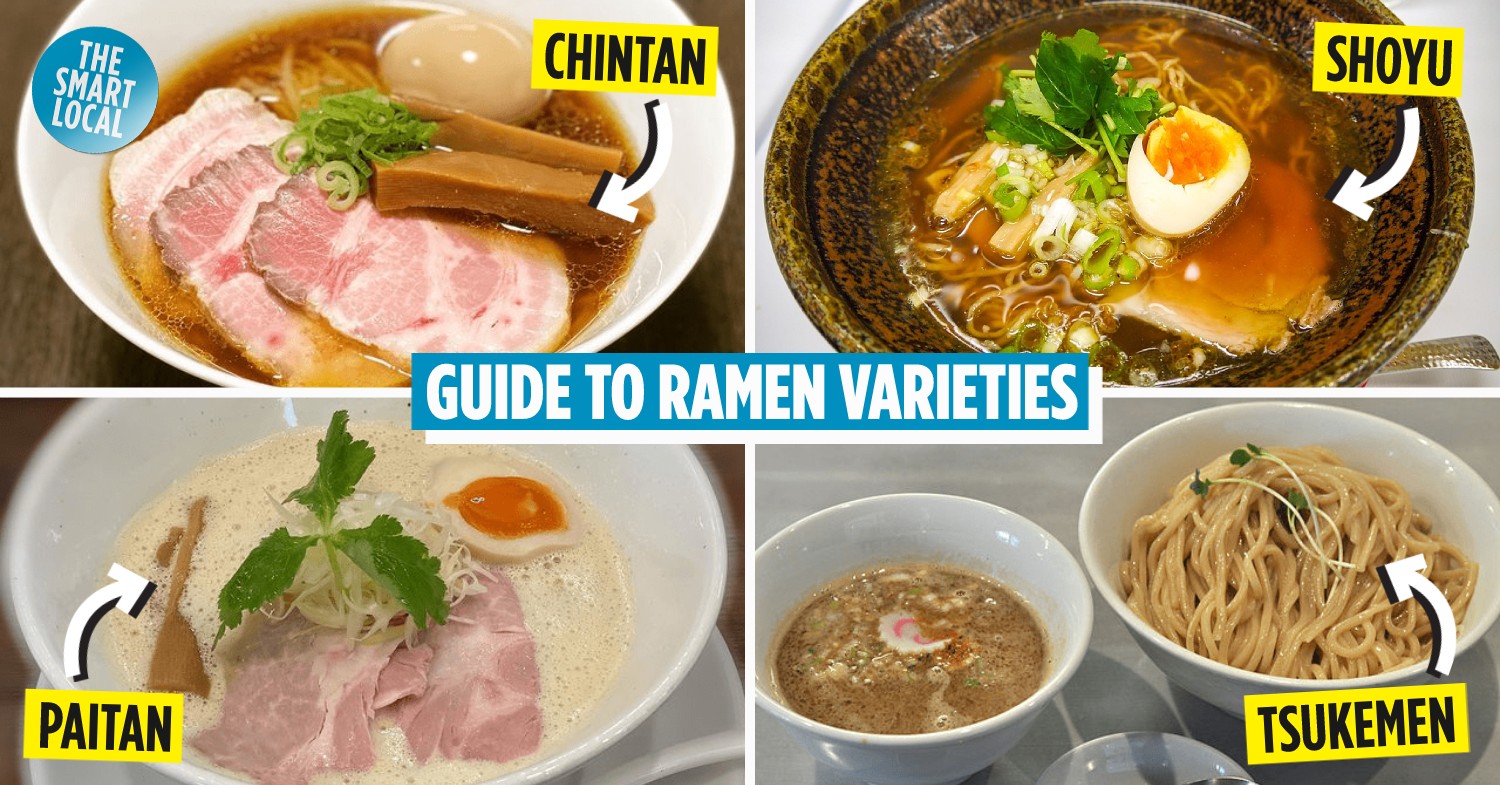
The Introduction section of the blog will provide an overview of the Tonkotsu vs Shoyu ramen battle. Ramen is a beloved dish in Japanese cuisine, and Tonkotsu and Shoyu are two popular variations of this flavorful noodle soup. This section will highlight the popularity and origins of both broths, as well as their unique characteristics. It will set the stage for the subsequent sections, which will delve into the details of Tonkotsu and Shoyu ramen, their flavor profiles, cultural significance, and where to find the best of each style.
The Popularity Of Tonkotsu And Shoyu Ramen
Tonkotsu and Shoyu ramen have both gained immense popularity in the world of Japanese cuisine. Tonkotsu ramen, with its rich and creamy pork-based broth, has captured the hearts of many ramen lovers seeking a decadent and indulgent meal. Shoyu ramen, on the other hand, with its savory soy sauce-flavored broth, appeals to those looking for a lighter yet flavorful option. Both styles offer a unique and satisfying dining experience, attracting a wide range of enthusiasts. Their popularity is evident in the numerous ramen shops and restaurants dedicated to serving these beloved dishes.
Origins And Characteristics Of Tonkotsu And Shoyu Broth
Tonkotsu broth originated in the Kyushu region of Japan, particularly in Hakata and Kurume. It is made by simmering pork bones for several hours, resulting in a thick and creamy texture. The intense flavor comes from the collagen and marrow released from the bones during the cooking process. On the other hand, Shoyu broth has its roots in Tokyo and the Kanto region. It is made by combining soy sauce, chicken or vegetable stock, and other seasonings. The soy sauce adds a savory and umami flavor to the broth. Shoyu broth is lighter in texture compared to Tonkotsu broth.
Tonkotsu Ramen
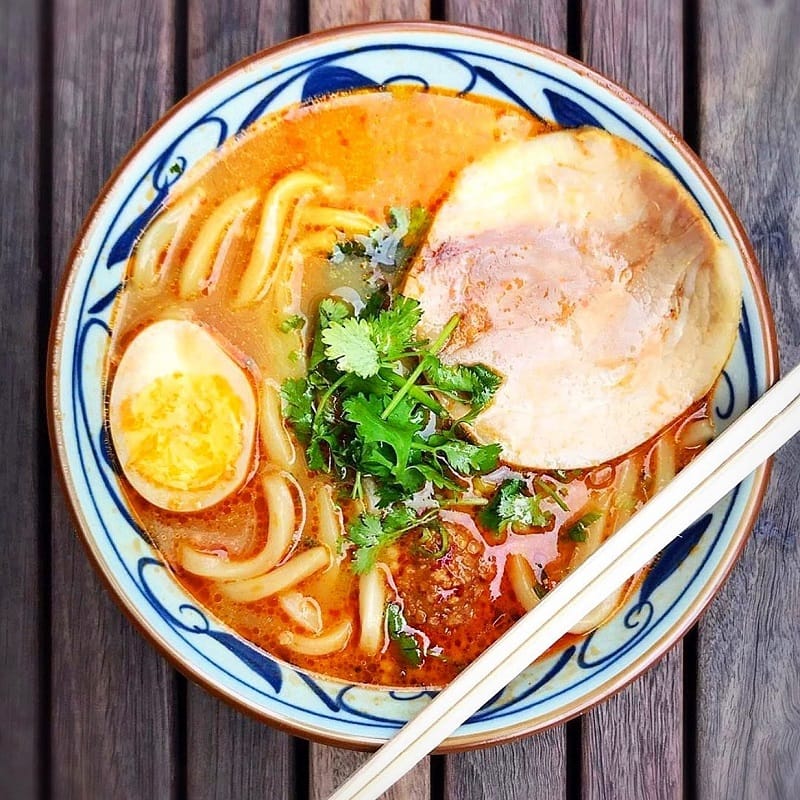
Tonkotsu Ramen is a beloved style of ramen that originates from the Kyushu region of Japan. The defining feature of Tonkotsu Ramen is its rich and creamy pork-based broth. This broth is made by simmering pork bones for several hours, resulting in a thick and flavorful base. The broth is then combined with noodles and topped with ingredients such as sliced pork, green onions, and boiled eggs. Tonkotsu Ramen is known for its intense flavor and velvety texture, making it a favorite among ramen enthusiasts. Whether enjoyed in a traditional ramen shop or made at home, Tonkotsu Ramen is sure to satisfy any craving for a hearty and indulgent meal.
Tonkotsu Broth: Rich, Creamy, And Pork-based
Tonkotsu broth is characterized by its rich and creamy texture, thanks to the prolonged boiling of pork bones. This process extracts all the collagen and marrow, resulting in a velvety and luxurious broth. The savory flavor of the pork infuses every spoonful, creating a deeply satisfying experience. The thickness of the broth coats the noodles, intensifying their taste. The combination of the pork flavors, umami, and creaminess makes Tonkotsu broth a beloved choice among ramen enthusiasts. It provides a hearty and indulgent dining experience that leaves a lasting impression.
Tonkotsu Toppings And Noodles
Tonkotsu ramen is typically garnished with an array of delicious toppings that complement the rich and creamy broth. Some popular toppings include slices of tender chashu (braised pork belly), marinated soft-boiled eggs, crunchy wood ear mushrooms, flavorful menma (bamboo shoots), and spicy kimchi. These toppings add different textures and flavors to the ramen, creating a well-rounded and satisfying bowl. As for the noodles, Tonkotsu ramen is traditionally served with thick and chewy noodles, which are perfect for absorbing the thick and flavorful broth. The combination of the savory toppings and hearty noodles enhances the overall dining experience of Tonkotsu ramen.
Shoyu Ramen
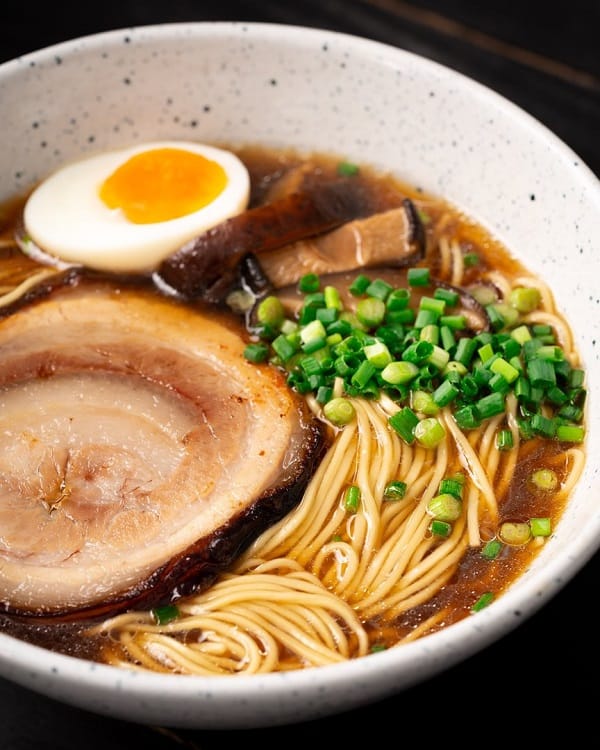
Shoyu Ramen is a popular Japanese noodle dish known for its savory and tangy flavor. The broth is soy sauce-based, giving it a distinct and robust taste. This type of ramen is commonly found in Tokyo and is characterized by its curly noodles. The broth is made from a combination of meat or vegetable stock infused with soy sauce and other seasonings. Shoyu ramen is typically garnished with various toppings such as chashu (braised pork), boiled eggs, green onions, and nori (seaweed). The combination of the flavorful broth and chewy noodles creates a satisfying and comforting bowl of ramen.
Shoyu Broth: Soy Sauce-based With A Savory Flavor
Shoyu broth is a key component of Shoyu ramen and is known for its rich and savory flavor. The broth is soy sauce-based, creating a deep umami taste that complements the other ingredients. It is made by combining soy sauce with meat or vegetable stock, resulting in a clear, brown broth. The soy sauce adds a slightly salty and tangy note to the broth, enhancing its overall savoriness. This flavorful broth serves as the foundation for the delicious and satisfying bowl of Shoyu ramen.
Shoyu Toppings And Noodles
Shoyu ramen is often topped with a variety of ingredients that complement its soy sauce-based broth. Common toppings include sliced chashu (braised pork belly), seasoned bamboo shoots, green onions, and nori (seaweed). The noodles used in Shoyu ramen are typically medium-thin and have a firm texture that holds up well to the rich broth. These noodles are made from wheat flour and give the bowl of ramen a satisfying chewiness. The combination of these toppings and noodles enhances the overall flavor and texture of the Shoyu ramen experience.
Flavor Profile Comparison
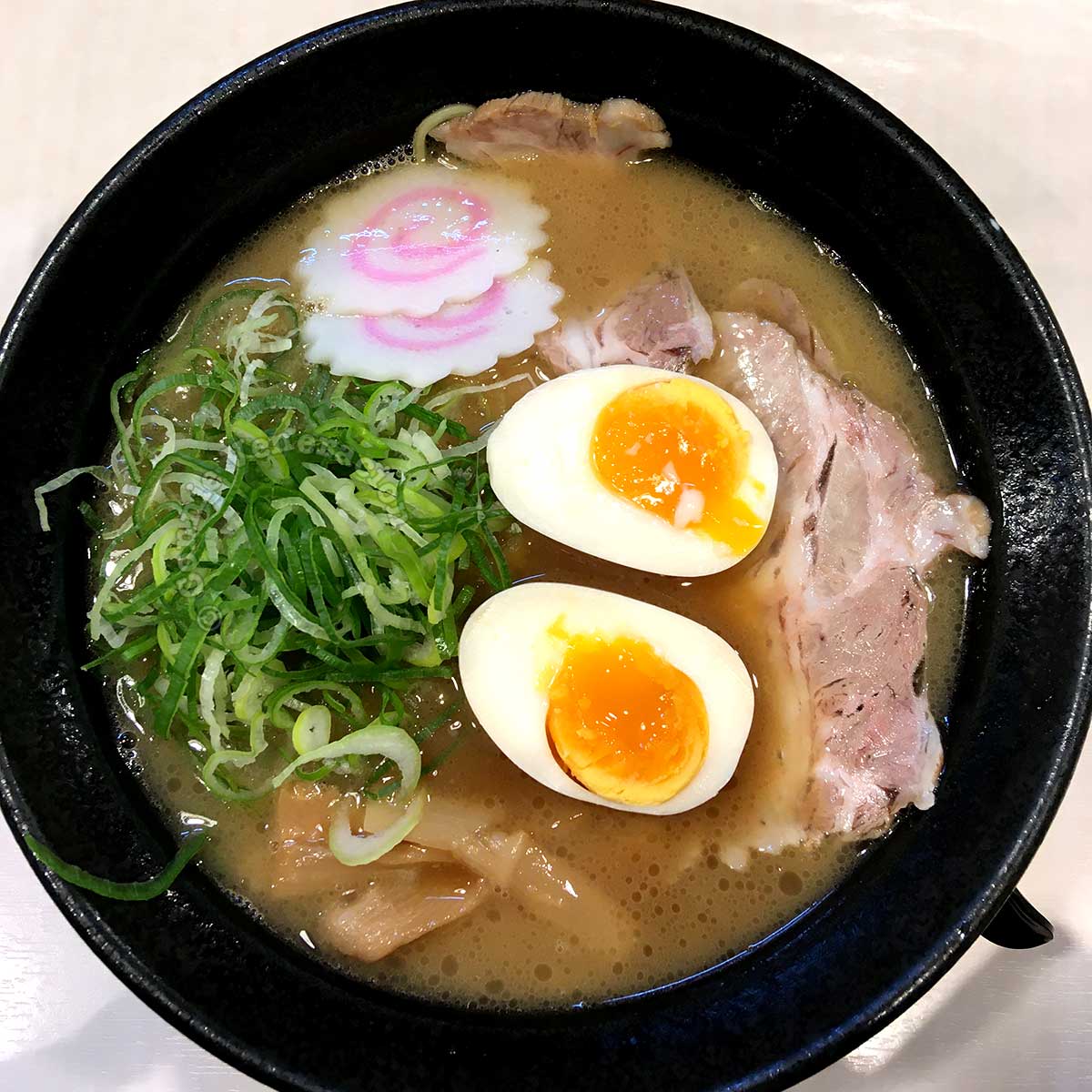
When comparing the flavor profiles of Tonkotsu and Shoyu ramen, one can discern distinct differences. Tonkotsu ramen boasts a rich and creamy broth derived from simmering pork bones for hours, resulting in a deep umami taste that is both robust and complex. On the other hand, Shoyu ramen features a savory broth infused with the distinct flavor of soy sauce, providing a lighter and more balanced taste. While Tonkotsu offers a heavy and indulgent experience, Shoyu offers a satisfying depth of flavor without overwhelming the palate. The choice between these two flavors ultimately depends on personal preferences and desired taste profiles.
Comparing The Taste And Texture Of Tonkotsu And Shoyu Broth
Tonkotsu broth is known for its rich and creamy texture, with a deep umami flavor that comes from hours of simmering pork bones. It has a thick and heavy consistency that coats the palate with each sip. Shoyu broth, on the other hand, has a lighter and more balanced taste. The soy sauce infusion gives it a savory and slightly salty flavor, with a clear and clean texture. While Tonkotsu offers a bold and indulgent experience, Shoyu provides a satisfying depth of flavor without overpowering the palate. It ultimately comes down to personal preference and desired taste profile.
Key Differences In Flavor And Aroma
The key differences in flavor and aroma between Tonkotsu and Shoyu broth are distinct. Tonkotsu broth offers a rich and creamy taste, with a deep umami flavor derived from simmering pork bones. It has a thick and heavy texture that coats the palate with every sip. In contrast, Shoyu broth has a lighter and more balanced taste. The infusion of soy sauce gives it a savory and slightly salty flavor, with a clear and clean texture. These differences in flavor and aroma contribute to the unique profiles of Tonkotsu and Shoyu ramen.
Cultural Significance
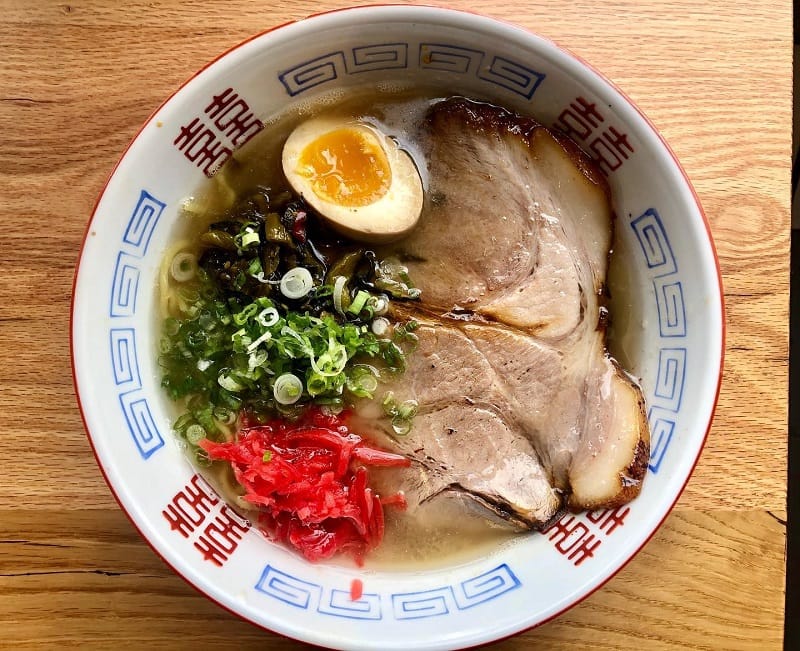
The cultural significance of Tonkotsu and Shoyu ramen extends beyond their delicious flavors. These two styles of ramen have become iconic representations of Japanese cuisine and hold a special place in the hearts of both locals and visitors. Tonkotsu ramen, with its rich and creamy broth, is often associated with southern Kyushu and is considered a specialty in that region. Shoyu ramen, on the other hand, showcases the use of soy sauce, which is a staple in Japanese cooking. Both styles have a long history and have evolved to reflect the unique regional flavors and preferences of Japan. They serve as a culinary symbol of Japan’s diverse and rich food culture.
The Regional Variations And Historical Importance Of Tonkotsu And Shoyu Ramen
Tonkotsu and Shoyu ramen have deep roots in Japanese culinary history and hold significant regional importance. Tonkotsu, with its rich and creamy broth, originated in southern Kyushu and has since become a specialty in that region. On the other hand, Shoyu ramen, showcasing the use of soy sauce, originated in Tokyo and is widely enjoyed in northern and eastern Japan. These regional variations highlight the diverse culinary preferences across Japan. Additionally, both styles have historical significance, representing the evolution of traditional Japanese cuisine and reflecting the unique flavors and preferences of different regions.
Popular Cities And Restaurants Known For Each Style
When it comes to popular cities known for Tonkotsu ramen, Fukuoka is at the top of the list. This city in southern Kyushu is considered the birthplace of Tonkotsu ramen and is home to renowned Tonkotsu shops such as Ichiran and Ippudo. Other cities like Kumamoto and Kagoshima also specialize in Tonkotsu ramen and have their own local favorites.
On the other hand, Shoyu ramen is most popular in Tokyo, where it originated. The capital city is filled with countless Shoyu ramen shops, including famous ones like Tsuta and Menya Musashi. Yokohama and Sapporo are other cities where Shoyu ramen is highly regarded.
No matter which style you prefer, these cities offer an array of dining options for ramen enthusiasts to indulge in the deliciousness of Tonkotsu or Shoyu ramen.
Conclusion
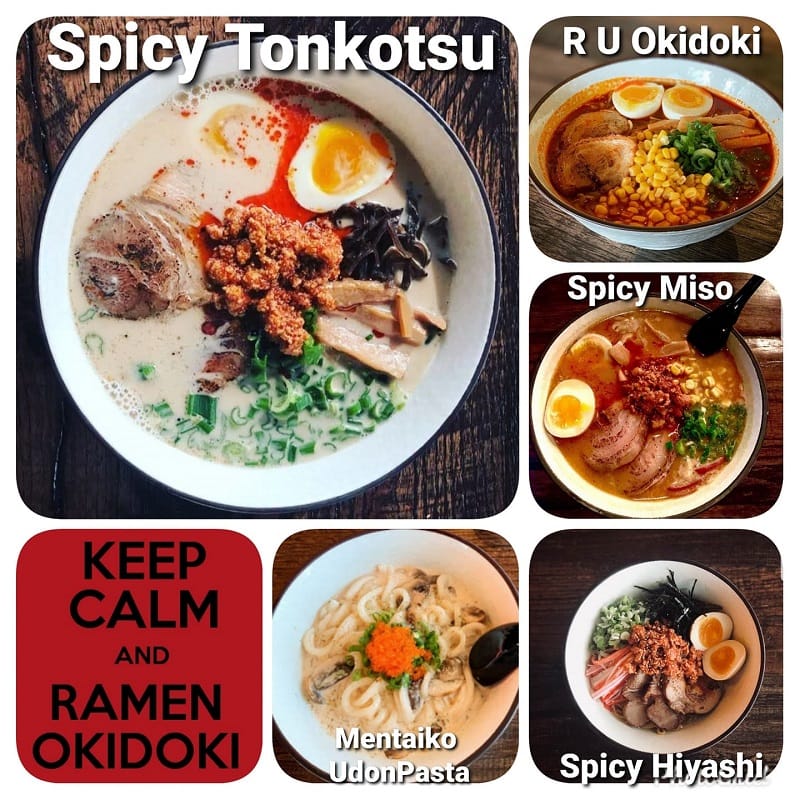
In conclusion, the battle between Tonkotsu and Shoyu ramen comes down to personal preference. Tonkotsu ramen offers a rich and creamy broth, while Shoyu ramen provides a savory flavor with a soy sauce base. Both styles have their own unique toppings and noodles that add to the overall experience. To truly appreciate the art of ramen, it is recommended to explore different variations and styles from various cities in Japan. Whether you prefer the hearty and robust Tonkotsu or the lighter and flavorful Shoyu, there is no denying the deliciousness of both styles.
Personal Preferences And Recommendations
When it comes to personal preferences, the choice between Tonkotsu and Shoyu ramen truly depends on individual taste. Some may prefer the rich and creamy Tonkotsu broth, while others may lean towards the savory flavor of Shoyu ramen. It is recommended to try both styles and explore different variations from various cities in Japan to fully appreciate the nuances of each. Ultimately, the best Tonkotsu and Shoyu ramen can be found at renowned ramen restaurants that specialize in these specific styles. So, embark on a culinary adventure and discover your favorite bowl of ramen.
Where To Find The Best Tonkotsu And Shoyu Ramen
If you’re on the hunt for the best Tonkotsu and Shoyu ramen, there are some renowned cities and restaurants in Japan that are known for their exceptional offerings. For Tonkotsu ramen, Hakata in Fukuoka is famous for its rich and creamy broth. Tokyo and Yokohama also have numerous ramen shops specializing in Tonkotsu. On the other hand, if you’re craving Shoyu ramen, Yokohama is known for its savory soy sauce-based broth. Tokyo’s Tsukiji Fish Market area and Sapporo in Hokkaido are also popular destinations to find delicious Shoyu ramen. So, whether you prefer Tonkotsu or Shoyu, these cities are worth exploring for an authentic and memorable ramen experience.
FAQ: Tonkotsu vs Shoyu
1. What is Tonkotsu ramen?
Tonkotsu ramen is a popular Japanese noodle dish known for its rich and creamy broth. It is made by simmering pork bones for several hours until the broth becomes thick and flavorful. The resulting soup is typically topped with ingredients like sliced pork, green onions, nori (seaweed), and other optional add-ons.
2. What is Shoyu ramen?
Shoyu ramen, on the other hand, is a classic Japanese ramen variety that features a soy-based broth. The word “shoyu” translates to “soy sauce” in English. Shoyu ramen is characterized by its savory and slightly salty flavor profile, derived from a combination of soy sauce, chicken or vegetable stock, and a variety of other seasonings. It is commonly garnished with toppings such as sliced chashu (roast pork), menma (seasoned bamboo shoots), and a soft-boiled egg.
3. How do the broths differ?
The main difference between tonkotsu and shoyu ramen lies in their broths. Tonkotsu broth is made by boiling pork bones for an extended period, resulting in a velvety texture and a rich, pork-centric flavor. It is often opaque and can have a slightly sweet taste. Shoyu broth, on the other hand, typically combines soy sauce with chicken or vegetable stock, providing a lighter and saltier flavor profile. Shoyu ramen broth tends to be clearer in appearance compared to tonkotsu.
4. What are the differences in taste?
Tonkotsu ramen has a deep, umami-packed flavor, with a creamy and fatty consistency that coats the palate. It is often described as hearty and indulgent. Shoyu ramen, on the other hand, has a more balanced and lighter taste. The soy sauce-based broth offers a savory and salty profile that is slightly tangy. The flavor of shoyu ramen may vary depending on the specific ingredients used in the soup base.
5. Which one is more suitable for vegetarians or vegans?
Neither tonkotsu nor shoyu ramen is traditionally vegetarian or vegan, as both are typically made with animal-based broths. However, with the rising popularity of plant-based diets, there are now vegetarian and vegan versions available for those looking for alternatives. Vegetarian and vegan ramen typically replace the animal-based ingredients with vegetable broths, soy-based proteins, and a variety of vegetables.
6. Can you adjust the spiciness level in both types of ramen?
Yes, the spiciness level can be adjusted in both tonkotsu and shoyu ramen. Some restaurants offer spicy variations of these ramen styles, allowing customers to choose the desired level of heat. The spiciness can be adjusted by adding chili oil or other spicy condiments, giving the ramen an extra kick. It’s always a good idea to ask the waiter or server about spiciness options if you prefer a milder or hotter bowl of ramen.
In summary, tonkotsu and shoyu ramen are both delicious and popular bowls of Japanese noodle soup. While tonkotsu features a rich and creamy pork bone broth, shoyu ramen boasts a savory soy-based broth. The choice between the two ultimately comes down to personal preference, whether you prefer a hearty and indulgent ramen experience or a lighter, saltier taste.

We are a small takeaway restaurant offering a great selection of food cooked by our Thai chef. Table spaces are limited, so please book in advance.